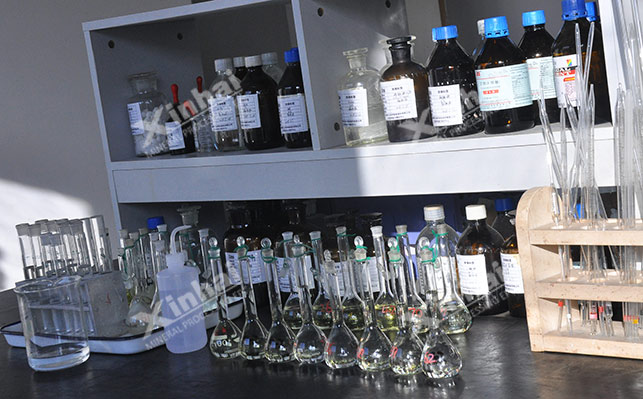
15311826613
Click to add WeChatFlotation is one of the common methods of lithium ore beneficiation. In addition, it also includes gravity separation (dense medium beneficiation method), magnetic beneficiation method and joint beneficiation method, etc. During flotation, if you want to obtain ideal lithium concentrate, the selection of flotation reagents is very important, especially the collector, which is the key to the flotation of lithium ore. In this section, we will focus on introducing several common lithium ore collectors: anionic collectors, cationic collectors, combination collectors, and new collectors.

Anionic collectors and lithium ores The collection mechanism mainly depends on the combination of particles on the surface of lithium ore particles and anion collector. Under the appropriate pH value conditions for single mineral flotation, the anionic collector interacts with the surface of spodumene through electrostatic force and chemical reaction, resulting in good selectivity.
The more common anion collectors include sodium oleate, oxidized paraffin soap, naphthenic acid soap, sodium lauryl sulfate, hydroxamic acid, etc. These anion collectors pass through different active groups. The group acts on the surface of lithium ore particles. A single anion collector has good selectivity, but its collection ability is weak. It can be used with high-valent metal ion activators under strong alkaline conditions, and the selectivity of activation can be adjusted by adjusting high-valent metal cations.

In addition, fatty acid collectors such as oleic acid and oxidized paraffin soap are used in large amounts during the flotation of lithium ores. It is not easy to dissolve and disperse in the medium, so the slurry environment needs to be adjusted to alkaline, and the temperature is also required.
Lithium ore cation collectors include Dodecylamine and Tetradecanamine strong>, Hexadecylamine and its isomers, Mixed amines and Cocoamine, etc., to amines The base acts on the surface of lithium ore particles through electrostatic force or van der Waals force, which requires high-valent metal cations and regulators to control the selectivity of the activation of the ore particles. When performing pure mineral flotation of lithium minerals, the flotation ability is good in a wide pH range, and the lithium ore recovery rate is high, but the selectivity for different minerals is poor.
The combination of different collectors can often play a greater role, resulting in phenomena such as co-adsorption, lengthening of the hydrophobic end, and promotion of adsorption. , some can improve the flotation efficiency, some can improve the concentrate grade, and some can reduce the dosage of chemicals or improve the flotation environment. Lithium ore combined collectors mainly include anionic and cationic combined collectors, anionic combined collectors, anionic and nonionic combined collectors, etc.
Anion and cation combined collector:The anion and cation combined collector has strong synergistic effect and surface activity in lithium ore flotation, and has good collection performance. and selectivity. The more commonly used combined collectors of this type include a cationic collector containing a -NH2 structure and an anionic collector containing a -COOH structure.

Anionic combination collector:In lithium ore flotation, anionic combination collector It can improve the flotation environment and enhance the performance of the agent through anionic active groups with different structures. It has lower cost and can improve the concentrate index.
Anionic and non-ionic combined collectors: In the flotation of silicate lithium minerals, anionic and non-ionic combined collectors can exert good performance and non-ionic collection The agent molecule is larger, and when combined with an anionic collector, it acts as a synergist to promote the dissolution and dispersion of the anionic collector in the flotation solution, reduce the critical micelle concentration of the collector, and improve the flotation performance.
The above are the collectors commonly used in lithium ore flotation. In actual production, the selection of collectors needs to be based on the mineral propertiesOre beneficiation test can effectively obtain the ideal lithium concentrate. In addition to the common collectors mentioned above, new collectors have appeared, such as amphoteric collectors and chelating collectors.